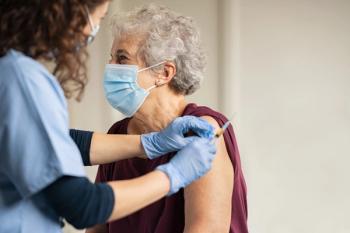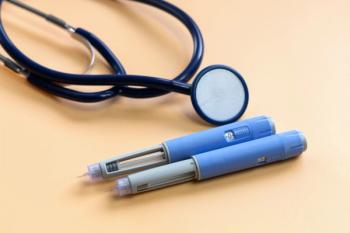
Pharmacy Practice in Focus: Health Systems
- September 2013
- Volume 2
- Issue 5
Adjusting a Patient's Antihypertensive Regimen
Case
AP is a 31-year-old male with a complicated medical history significant for end-stage renal disease (ESRD) on hemodialysis (HD), uncontrolled diabetes, and hypertension. He was recently hospitalized for health care—acquired pneumonia. His hospitalization, however, was complicated by flash edema secondary to a hypertensive emergency with systolic blood pressures as high as 250 mm Hg. Despite administration of his home antihypertensive regimen (amlodipine 10 mg daily, lisinopril 40 mg daily, clonidine 0.3 mg/day patch every 7 days, hydralazine 75 mg 3 times a day, and carvedilol 25 mg twice a day) he continued to experience systolic blood pressures of 220 mm Hg. The inpatient team discontinued hydralazine and started minoxidil 5 mg daily with a decrease in systolic blood pressure to 180 mm Hg. Minoxidil was titrated to 10 mg daily at time of discharge.
He presents to interdisciplinary hospital follow-up clinic at his patient-centered medical home 3 days after hospital discharge. At this visit his blood pressure is 106/68 mm Hg and pulse is 99 beats per minute. He complains of generalized fatigue and has bilateral 2+ pitting edema to the knees. The physician asks the clinical pharmacist practitioner if his antihypertensive regimen should be adjusted.
Answer
It is appropriate to adjust AP’s antihypertensive regimen with the goal of reducing fatigue secondary to hypotension and lower extremity edema, which may be an adverse effect of oral minoxidil or amlodipine.
Minoxidil is a potent antihypertensive agent that acts through direct peripheral vasodilation.1 Severe adverse effects have led to a black box warning for pericardial effusion, tamponade, and exacerbation of angina pectoris. In addition, edema is also reported in approximately 10% of patients within a few days of minoxidil initiation. Minoxidil may cause dramatic decreases in blood pressure leading to orthostatic hypotension and tachycardia. The time to full antihypertensive effect of minoxidil is dose dependent, with maximum effect for minoxidil 10 mg per day achieved within 7 days, compared with 20 mg per day within 5 days. Lower doses of minoxidil should be used in patients with ESRD and those on HD, as minoxidil and its metabolites are renally excreted.
Amlodipine is a dihydropyridine calcium channel blocker that is relatively well tolerated. The most common adverse effect of amlodipine is peripheral edema, which occurs in approximately 10% of patients.2 Serious adverse effects with amlodipine are uncommon.
While amlodipine may worsen lower extremity edema through vasodilation, the additional risks associated with minoxidil provide a strong indication to first minimize exposure to this medication. In addition, if minoxidil 10 mg daily is continued, AP may experience more severe hypotension, as steady state is achieved approximately 5 days from medication initiation. Further blood pressure lowering may increase risk for symptoms of hypotension.
In this case, minoxidil should be decreased to 5 mg by mouth once daily. In addition, the patient should continue amlodipine 10 mg daily, lisinopril 40 mg daily, clonidine 0.3 mg/day patch every 7 days, and carvedilol 25 mg twice daily. In the future, the team may consider increasing carvedilol to a maximum dose of 50 mg by mouth twice daily and further reduction of minoxidil.
Jamie J. Cavanaugh, PharmD, CPP, BCPS, is clinical assistant professor of medicine at the University of North Carolina (UNC) School of Medicine, Division of General Medicine and Clinical Epidemiology. She is also assistant professor of clinical education at the UNC Eshelman School of Pharmacy, Division of Practice Advancement and Clinical Education, as well as clinical pharmacist practitioner at the UNC Health Care Department of Pharmacy.
References
- Minoxidil Package Insert [online monograph]. Corona, CA: Watson Pharma, Inc; 2009. http://dailymed.nlm.nih.gov/dailymed/lookup.cfm?setid=56274d6f-8439-4ab7-9bb8-a3fc10a26463. Accessed August 29, 2013.
- Facts and Comparisons eAnswers [Internet database]. Wolters Kluwer Health, Inc; 2013. http://online.factsandcomparisons.com. Accessed August 29, 2013.
Articles in this issue
about 12 years ago
Considerations for the Management of Angina Pectoris with Nitroglycerinabout 12 years ago
The Future of 340B: It's All About Perspectiveabout 12 years ago
Metastatic Breast Cancer Updatesabout 12 years ago
Mission Trip to Fort Liberte, HaitiNewsletter
Stay informed on drug updates, treatment guidelines, and pharmacy practice trends—subscribe to Pharmacy Times for weekly clinical insights.




















































































































































































































